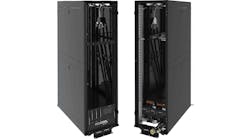Microsoft Plans Azure Cloud Expansions in Iowa, Virginia and Phoenix
Microsoft continues to expand its global data center infrastructure, buying land to add massive amounts of server capacity in key North American cloud hubs. As it builds more buying Azure Cloud infrastructure, Microsoft is sharpening its focus on sustainability through data center designs that use less water.
In recent weeks Microsoft has bought land in Iowa and Northern Virginia, adding runway for more server capacity in key data center clusters. The land deals total about $50 million, but represents billions of dollars in future investment to build and equip these data centers.
Microsoft also provided new details about its large new data center campus in the Goodyear cloud cluster west of Phoenix, including plans to dramatically reduce the water impact of the huge development.
Iowa Land Deals Signal Future Growth
Microsoft has built a major cloud cluster in West Des Moines, Iowa, where it is developing three large data center campuses. This week, local media revealed that the company has bought land for two additional campuses, which could bring another $2 billion in investment to West Des Moines, atop the estimated $3 billion to $5 billion that Microsoft has spent locally on its campuses. Iowa
Local real estate transaction data shows that Microsoft has purchased nearly 170 acres of land adjacent to its Project Alluvion data center in West Des Moines, and may be assembling additional land parcels as well. The two new West Des Moines data centers – known as Project Ginger East and Project Ginger West – will each be about 1.8 million square feet and each cost about $1 billion to develop, which includes building construction materials and machinery and equipment, West Des Moines’ community and economic development director Clyde Evans told local media. Construction on the two new data centers is expected to begin in September 2021, Evans said.
Iowa has become a key data center destination for hyperscale operators, as Facebook, Google and Apple also have huge server farms in the state. Placing data centers in the center of the country makes it easier to distribute content to major markets like Chicago and Dallas, reducing lag and buffering for streaming media like Netflix movies or Facebook videos. It also allows for data to move quickly to either coast, which can be important in application development.
This trend is spurring a data center building boom, pumping billions of dollars into towns across America’s heartland.
More Land Banking in Northern Virginia
Northern Virginia is the home of the cloud, with the largest concentration of data center infrastructure anywhere on earth. It’s not surprising that Microsoft continues to secure real estate for future growth in the region.
Over the summer Microsoft bought a 66-acre site in the fast-growing Dulles Cloud Corridor in Northern Virginia. Last week it acquired a 46-acre land parcel in Manassas in Prince William County, which is experiencing major growth as data center builders look beyond Loudoun County and Ashburn’s Data Center Alley, where development sites have grown scarce. The land deal was first reported by the Washington Business Journal, which says Microsoft now controls 440 acres of land in Northern Virginia, and is “believed to be on the hunt for more.”
Microsoft reportedly paid $29 million for 46 acres along Interstate 66, or about $625,000 an acre, compared to the $1.4 million an acre the company paid for its recent land acquisition near Dulles Airport, and the rates approaching $2 million per acre for land in Data Center Alley.
The future of cloud capacity in Northern Virginia is being shaped by land deals and leasing negotiations that are happening now. As the appetite for data center space remains high, both users and developers are looking to play a longer game.
Building Bigger and Drier in Phoenix Suburbs
Phoenix houses another major concentration of cloud capacity for Microsoft, which operates in multiple leased data centers in Chandler. The company is now building a major data center campus of its own in the western suburbs of Phoenix, where it has bought more than 400 across of land in the emerging cloud hub in Goodyear, and another 150 acres to the north in El Mirage. The campuses will form Microsoft’s West US 3 region, and feature at least 750,000 square feet of data center space in early phases.
Microsoft recently announced plans to make its operations “water positive” by 2030, and outlined a series of initiatives for its Arizona operations to help realize that goal.
“Our datacenter design and operations will contribute to the sustainability of our Arizona facilities,” said Brian Janous General Manager, Energy and Sustainability for Microsoft. “We’re also committed to zero waste-certified operations for this new region, which means a minimum of 90 percent of waste will be diverted away from landfills through reduction, reuse and recycling efforts.
“Microsoft’s Arizona datacenters will use zero water for cooling for more than half the year, leveraging a method called adiabatic cooling, which uses outside air instead of water for cooling when temperatures are below 85 degrees Fahrenheit,” Janous added. “When temperatures are above 85 degrees, an evaporative cooling system is used, which is similar to “swamp coolers” in residential homes. This system is highly efficient, using less electricity and a fraction of water used by other water-based cooling systems, such as cooling towers.”
Microsoft has previously made extensive use of adiabatic cooling systems in its use of factory-built modular data centers or IT-PACs.






